Georgia’s Lake Oconee is home to some amazing fishing and wildlife adventures. It’s a great place to spend some time outdoors but are there any animals that you should watch out for during your visit? Most of the animals in Lake Oconee are harmless, including the snakes. Many other lakes in Georgia have more snakes. As a manmade reservoir in central Georgia, Lake Oconee has stocked fish of many species. It is known as a great spot for fishing.
Fortunately, the majority of creatures within Lake Oconee are fish that anglers like to see. Lake Oconee has some great fishing spots. The lake is 19,000 acres. This means that there are plenty of places to get away from the crowds and close to the fish. While there aren’t any specimens that present much danger as predators, some are quite large. The biggest fish in Lake Oconee include flathead and blue catfish. If fishing for these large fish, your fishing gear might be in danger if you’re not ready for a fight.
1. Striped Bass
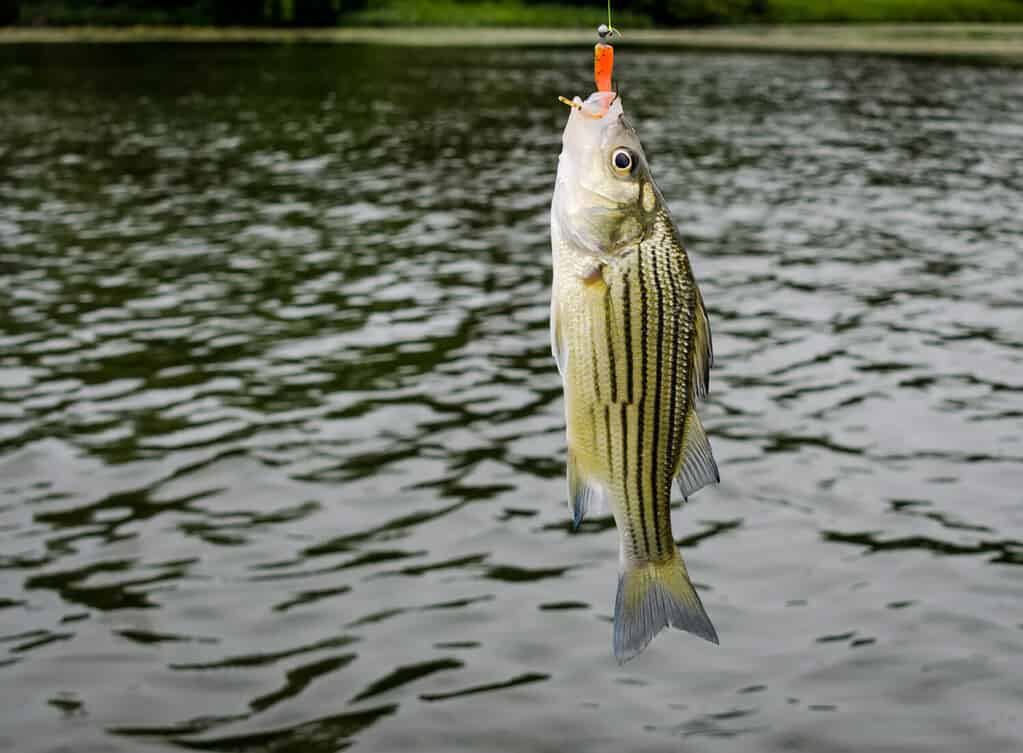
Striped bass are named for their lateral stripes, which also make them easy to identify.
©HildeAnna/Shutterstock.com
Also known as a striper, the striped bass is a popular sport fish around the United States. They mostly live in rivers and estuaries but are stocked in lakes such as Lake Oconee. They get their name from stripes that run along their bodies. Striped bass can be silvery, blue, black, green, or brown. They have a particularly strong sense of smell which helps them get around. Striped bass typically get around 30 pounds (a little bit more for females) but there are recorded striped bass reaching over 100 pounds. In Lake Oconee, there are stocked striped bass and hybrid striped bass.
2. Flathead Catfish
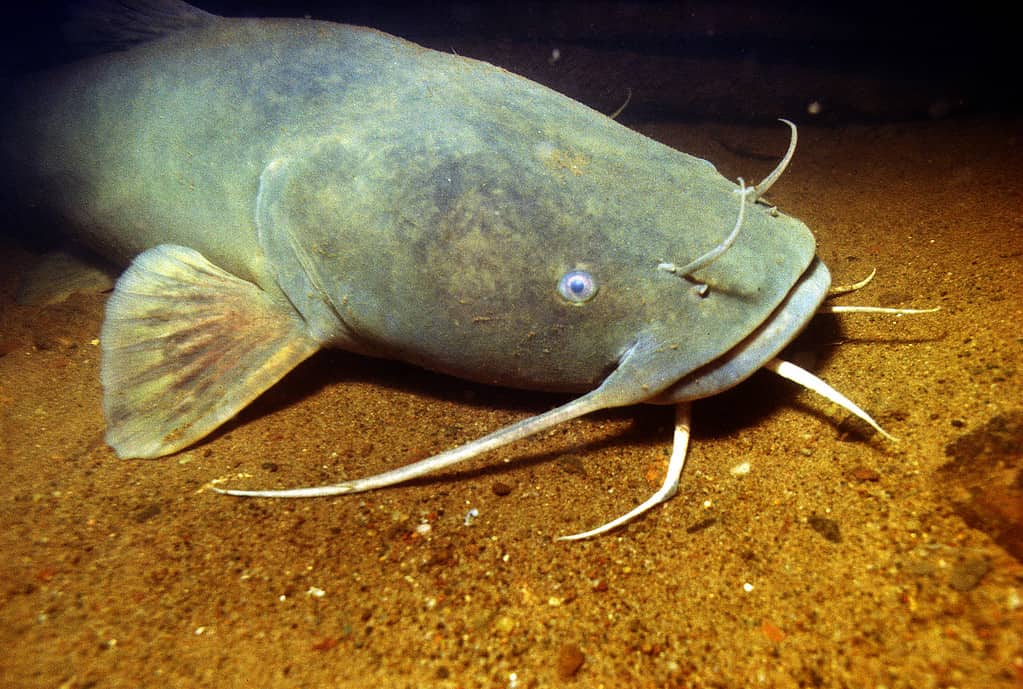
Flathead
catfish
have “whiskers” on their faces, a characteristic shared by many catfish.
©stammphoto/ via Getty Images
Lake Oconee is home to some impressive catfish, including the record-breaking flathead catfish caught in 2023. This fish weighed 62 pounds. After it was weighed and documented for official records, the angler released it back into the lake. Because it takes so long for catfish to reach this massive size, fishermen generally release them back when they do catch them. If they catch smaller catfish, they tend to keep them to eat more often. Flathead catfish are easy to recognize by their flat heads and forked tails. Flatheads are some of the largest catfish with the largest ones getting over 100 pounds.
3. Blue Catfish
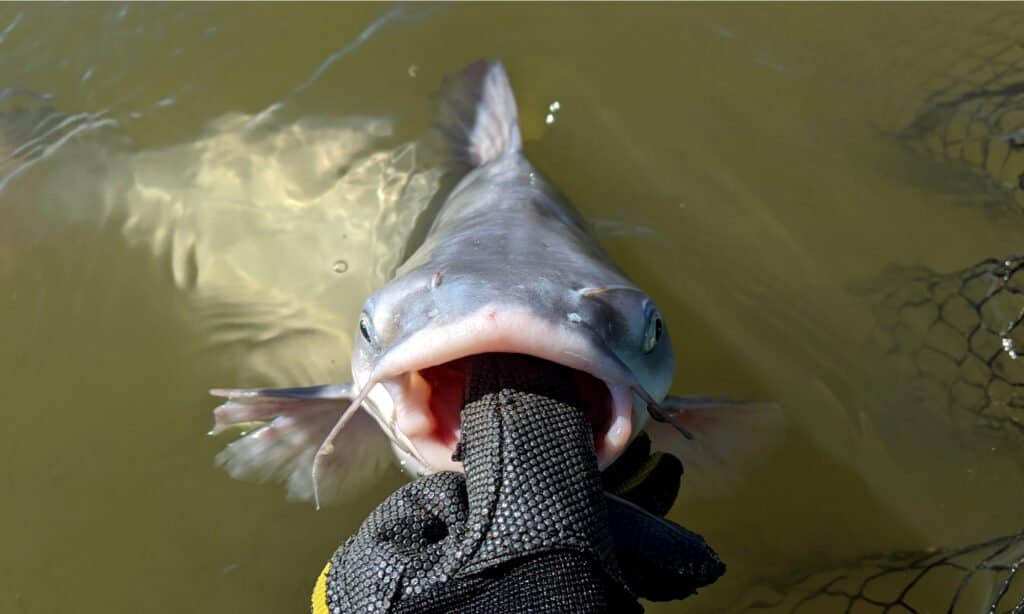
Blue catfish are some of the largest catfish species out there.
©M Huston/Shutterstock.com
The blue catfish population in Lake Oconee is stocked, like many other types of fish. Blue catfish are another massive specimen that can grow over 100 pounds. The record blue catfish in Lake Oconee weighed in at 70 pounds 2 ounces. An angler brought in the record-breaking catch in 2023 when he was fishing for much smaller catches, such as white bass.
4. Largemouth Bass

Not surprisingly, largemouth bass are named for their large mouths.
©Maclane Parker/Shutterstock.com
Largemouth bass are fun for fishing but not great as a meal. They tend to put up a fight, making a catch that much more rewarding. On Lake Oconee, dock fishing for bass is more popular and accessible than at some larger lakes in Georgia due to the setup. Largemouth bass are named for their large mouths. They tend to be around 5 or 6 pounds, although the largest fish can be as big as 20 pounds. The Georgia record for a largemouth bass is 22 pounds 4 ounces. It was caught in Lake Montgomery in 1932. Since then, no one has broken this long-standing record.
5. Water Snake
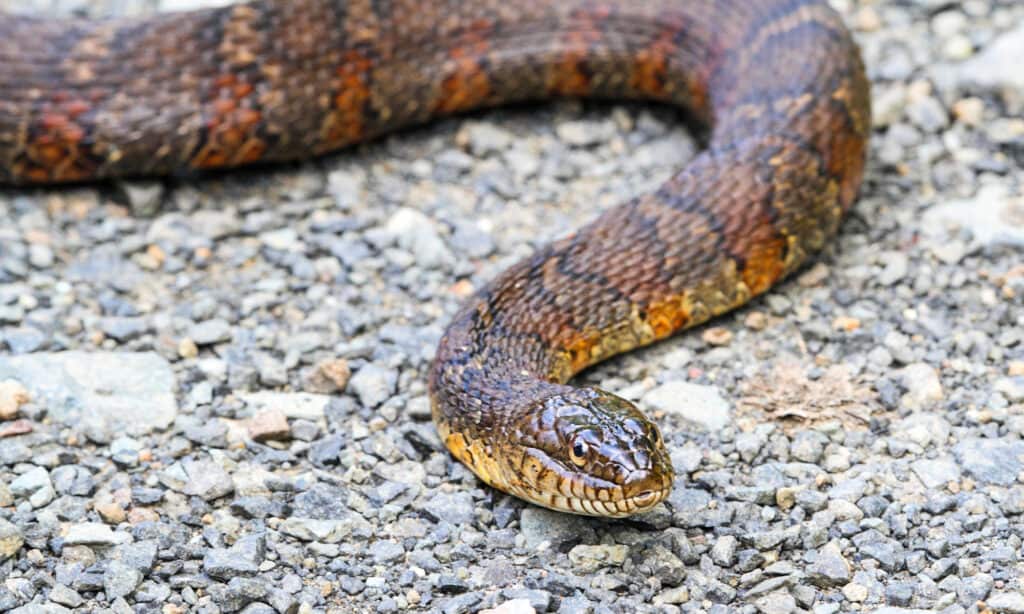
Northern watersnakes are the most common of all watersnake species.
©Steve Byland/Shutterstock.com
Don’t confuse these snakes for the venomous cottonmouth. Both water snakes and cottonmouths share many features, including their overall size, coloring, and oddly shaped heads. But while cottonmouths have easily identifiable triangular heads, water snakes flatten their heads when they are threatened. The most common types of water snakes in Lake Oconee include the northern water snake and the brown water snake. Neither species is dangerous, at least not from venom.
6. Bald Eagle
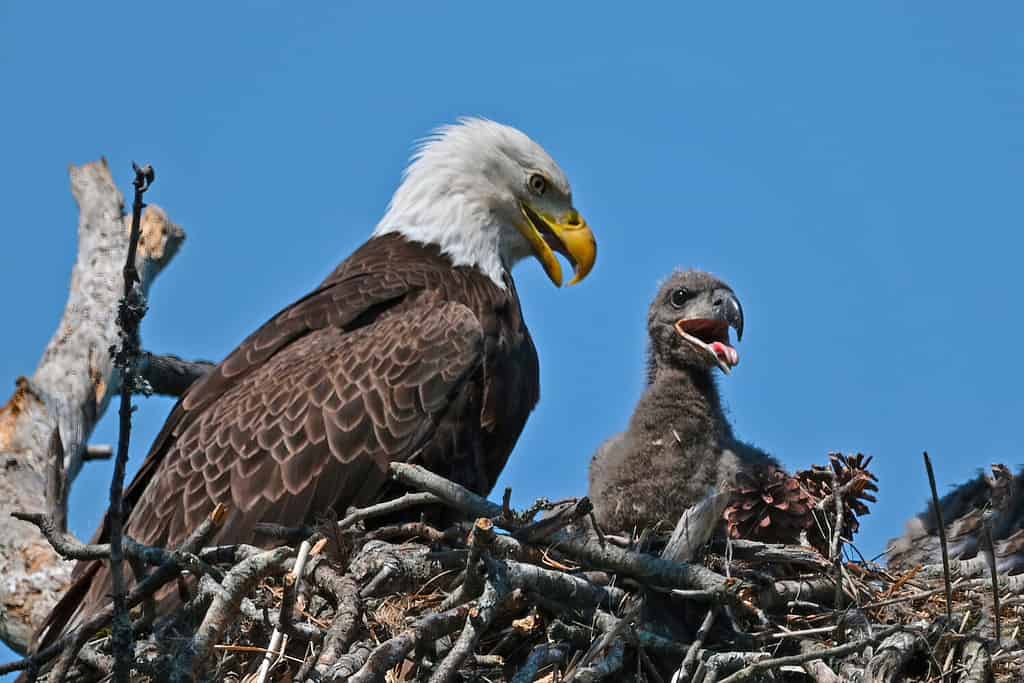
Bald eagles are a symbol of America and the national bird.
©Brian E Kushner/Shutterstock.com
This last animal isn’t dangerous (unless you’re a fish about to be eaten) but it was in danger of going extinct. Lake Oconee is a prime spot to see bald eagles and other birds of prey. According to the Georgia Department of Natural Resources, you should report sightings of bald eagle nests. Keeping records on these birds is one thing that helped them come back from the edge of extinction. You should also keep a good distance from the nest. If you get too close, you can interfere with the incubation process or cause other harm to the eagles or their eaglets.
Summary of Creatures Living in Lake Oconee
| Number | Animal |
|---|---|
| 1 | Striped Bass |
| 2 | Flathead Catfish |
| 3 | Blue Catfish |
| 4 | Largemouth Bass |
| 5 | Water Snake |
| 6 | Bald Eagle |
Thank you for reading! Have some feedback for us? Contact the AZ Animals editorial team.








